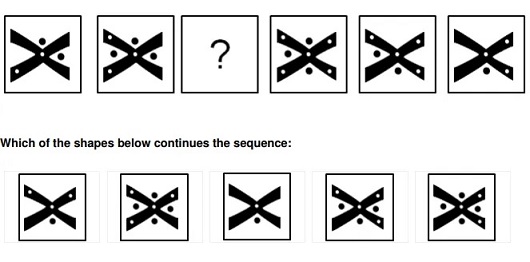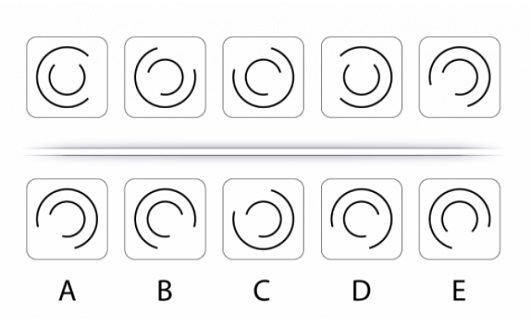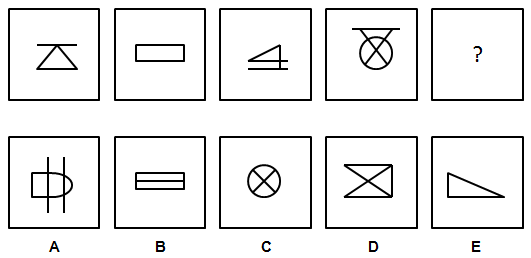How good are you at solving problems? Well, inductive reasoning is a type of aptitude test which measures your ability to problem solve. Known also as abstract reasoning tests, these tests are designed to measure how good your reasoning is to solve problems that contain unfamiliar information and find appropriate solutions.
Different from deductive reasoning, an inductive reasoning test is used alongside other tests and sits firmly within a logical processing arena of work.
Today we're going to take a look at what inductive reasoning tests are, what they look like, best tips to practice them and even give you some example questions.
What is an inductive reasoning test?
An inductive reasoning test is designed to assess your general intelligence and creativity whilst being able to apply this to problem solving scenarios. These tests measure your ability to work flexibly with unfamiliar information and find solutions.
Candidates who perform well on these tests tend to have a greater capacity to think conceptually as well as analytically.
Do you think logically or methodically? Can you spot patterns in a series of figures, diagrams or images? An inductive reasoning test is looking to see how you analyse and think about the sequences and, understand the patterns and in turn, answer correctly.
Inductive reasoning, also known as abstract reasoning, is testing your ability to not only find the patterns but also how quickly you are finding them. Accuracy and speed are essential components of this kind of testing. Being able to practice as much as you can and develop your reasoning skills will of course be of massive benefit.
One of the most common tests used in inductive reasoning is a diagrammatic test. This is where a sequence of diagrams are used with a missing piece of information somewhere in the sequence. You must then select the piece that best corresponds to that missing information from a list of potential answers.
Why are inductive reasoning tests used by employers?
Inductive reasoning helps employers to understand how you think and the way you logically process information around new rules and situations. Inductive reasoning has been used for many years in the engineering field where being able to think logically and respond quickly to changing situations is a must.
Of course, being able to think logically and problem solve is a skill that many different types of job roles require. Employers can use these tests to check performance and ability for all positions from graduates and managers to executives.
Inductive reasoning is also widely popular because these tests are less dependent on your level of education in verbal and numerical tests - it’s about how you think and use the logic which is more situationally focused.
Tips for practicing for inductive reasoning tests
Preparation is key when it comes to inductive reasoning tests, not only because you can develop your skills over a short period of time but also because it helps to know what these tests can look like - and what's expected of you. When practicing, try to remember to do these things;
- Use similar conditions to the actual test (no TV, phones, music);
- Use practice tests that allow you to go back to any questions you may have missed;
- Provide explanations in notes by the question as to why you answer it that way, then compare with the actual answers.
- Finally, be sure to use practice tests that you can access from anywhere!
Here are some easy-to-follow tips that will help you with your inductive reasoning practice.
Lots and lots of practice
Did we mention that you have to practice? Of course, saying and doing are two different things but being able to practice is going to set you up for success. Giving yourself the right amount of time before sitting a test is key, it helps you identify where your true level lies and how much practice you need.
Inductive reasoning requires you to answer quickly and accurately, practicing beforehand will of course get you more familiar with the types of questions and in return help you naturally speed up.
Importantly, stay calm
Logic-based assessments are asking you to remain calm when you think about it. Logic and reasoning is about not letting emotions take control of the situation, so remaining calm is a big component in this type of questioning. Use practice tests that provide full explanations in answers and if you can’t answer a question straight away, stop and breath for a few seconds and if it still troubles you - then go to the next one.
Pace yourself
Yes, inductive tests are designed to test how quickly you can answer questions but, going through them too fast or too slow does you no good. This is why practice is so essential. You want to be able to understand what the questions may look like and get a feeling for anything you may also miss if you go too fast. Be sure to do tests that give you full explanations of answers so you can develop muscle memory on different types of scenarios.
Inductive reasoning example questions
Example question 1

The correct answer is the second shape from the left in the selection.
An X shape is dotted with black and white dots. Both sets of dots are independent and follow a similar pattern. In each frame, a black dot is added counter-clockwise in the angles of the X shape, until all the angles are occupied. Then a dot is reduced, also counter-clockwise. The same pattern occurs with the white dots, only in a clockwise manner.
Example question 2
What comes next in the sequence.

The correct answer is B.
Example question 3
Compare the images and identify underlying rationale that links them in the sequence. Pick from the five choices provided.

The correct answer is A.
What is required is to count the number of lines in each shape. The first shape consists of four lines, the second shape is created from four lines etc. so the fifth object must be made up of four lines as well.
Assess aptitude with Thomas
Understanding how quickly someone learns new information can inform your recruitment decisions and help build personal development programmes.
The Thomas Aptitude assessment (GIA) consists of 5 online tests, including reasoning, perceptual speed, number speed and accuracy, word meaning and spatial visualisation.
Speak to one of our team to learn how the Thomas Aptitude assessment can help you better understand the learning speed and trainability of your people.




